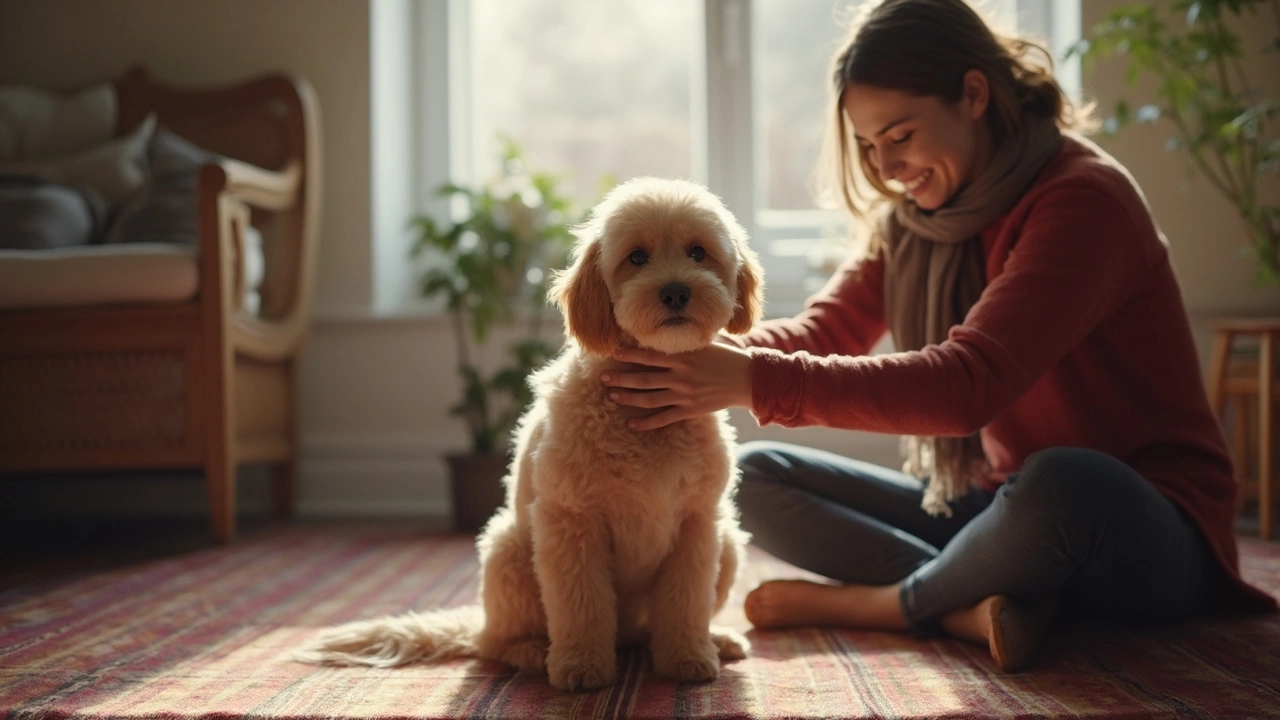How to Soothe Your Dog in Everyday Situations
If your dog gets jumpy when the doorbell rings, during a thunderstorm, or even on a busy walk, you’re not alone. Most pups react to loud sounds, new smells, or sudden changes, but the good news is you can help them feel safe with a few simple habits.
Create a Calm Space at Home
First, give your dog a spot that says “relax.” A crate, a corner with a comfy bed, or a quiet room works well. Add a blanket that smells like you – dogs love familiar scents. Keep the area free from clutter, loud TVs, and high‑traffic pathways. When your dog knows where to retreat, they’ll settle faster during stressful moments.
Use a low‑volume white noise machine or soft classical music. Studies show a steady, gentle sound can lower a dog’s heart rate. Play it in the background while you’re cooking or watching TV, and notice how quickly your pup stops trembling.
Touch and Massage Techniques
Dogs respond to gentle pressure. Try a slow, calming massage along the neck, shoulders, and back. Start with light strokes, then apply a bit more pressure if your dog leans in. This mimics the feeling of being close to the pack and can melt anxiety in minutes.
Don’t forget the paws. Lightly rubbing each pad can calm a nervous dog, especially after a walk. If your dog enjoys it, a brief “hand‑shake” routine can also become a soothing ritual.
Combine touch with a soothing voice. Talk in a soft, even tone and use your dog’s name. Simple phrases like “good boy, relax” paired with a gentle pat reinforce calm behavior.
Exercise and Mental Stimulation
Physical activity burns excess energy that often shows up as nervousness. A 20‑minute walk, a quick game of fetch, or a short run in the garden can make a big difference. Even on rainy days, indoor games like fetch down a hallway or hide‑and‑seek with treats keep the mind busy and reduce stress.
Interactive toys, puzzle feeders, or scent games are great for mental fatigue. When a dog’s brain is occupied, it’s less likely to fixate on anxiety‑triggering sounds.
Use Calming Aids Wisely
There are safe, vet‑approved products that help. Calming collars with lavender or pheromone laced pads can create a mellow atmosphere. If you opt for supplements, choose ones with proven ingredients like L‑theanine or CBD oil, but always check with your vet first.
During a thunderstorm, try a “thunder shirt” – a snug wrap that gives gentle pressure, similar to a hug. Many owners report noticeable calmness within minutes.
Consistent Routine and Predictability
Dogs thrive on routine. Feeding, walks, and bedtime at the same times each day give them a sense of security. If a change is inevitable, introduce it gradually. For example, if you plan to move furniture, shift a piece a little each day instead of a big swap all at once.
When you’re out, leave a piece of clothing with your scent to help your dog feel less alone. A small, familiar sound like a ticking clock can also keep the environment predictable.
By blending a quiet spot, gentle touch, regular exercise, and a few calming aids, you’ll give your dog the tools to stay relaxed no matter what pops up. Try one tip today, see how your pup reacts, and build on what works. A calmer dog means a happier home for both of you.
- Morgan Ainsworth
- 0 Comments
Dog Haircut Aftercare: How to Soothe Your Pup and Keep Them Calm
Fresh from the groomer but your dog's acting all anxious? This article unpacks why dogs might feel stressed after a haircut and gives you real-world ways to help them chill. From skin care hacks to simple comfort tricks, you'll get SOLUTIONS, not just sympathy. Soothing your dog after a trim is all about quick fixes and solid routines. Bring the wag back soon.
View More
